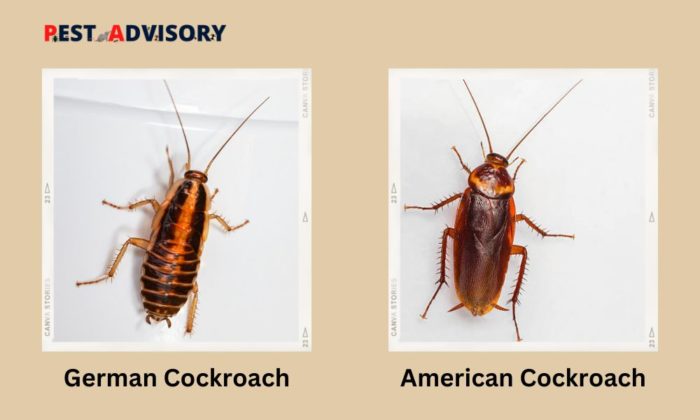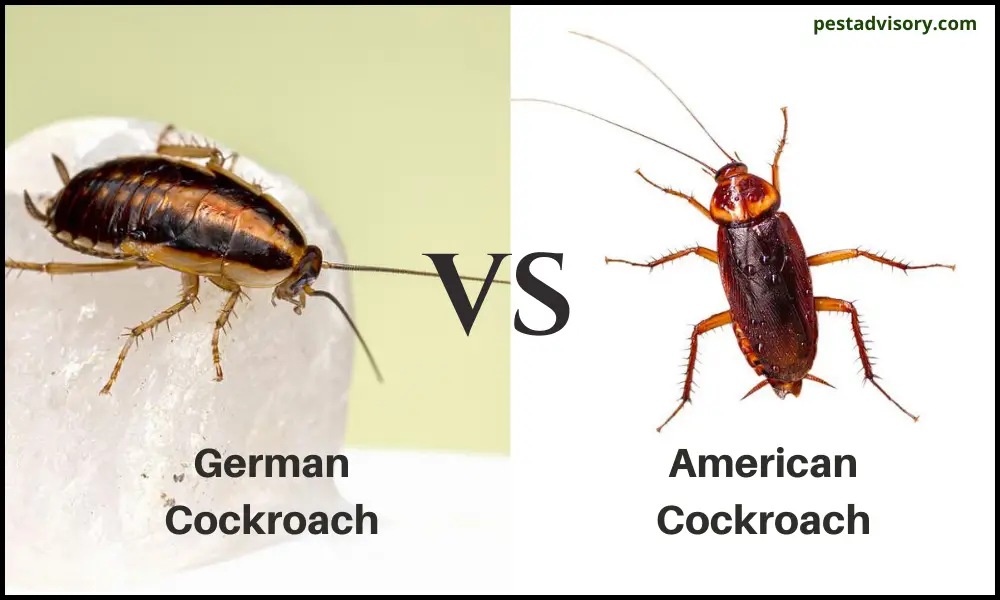Cockroaches are inherently scary to look at. The sight of such a creepy-crawly twitching its antennas and roaming around my house always sends me running for cover.
Sounds familiar?
While eradicating cockroaches is no rocket science, it is always advisable to thoroughly understand their taxonomies for better planning.
Important Note: If you're tired of pests and want a reliable solution, then you should definitely consider seeking help from a professional pest control company. DIY solutions can be effective, but if you're dealing with a significant pest infestation, you don't want to rely solely on DIY methods. Pest control companies typically don't charge huge fees. You can fill out this form to receive free quotes from the top local pest control companies, and compare the quotes and see for yourself. Then, finally, your pest problems will be eliminated for good.
So how do you tell 2 of the most common roaches on the planet apart?
What are the similarities and differences between them?
Keep reading to know more about German vs. American cockroaches and how you can differentiate between them.
German Vs. American Cockroach
Cockroaches are synonymous with filth, and poor sanitation and invariably appear whenever your attention falters.
They’re also vectors for pathogens, spreading Salmonellosis, Typhoid Fever, and Cholera.
While all roaches look the same and no one has the patience or nerve to inspect their oily bodies, it is evident how harmful they are, and it is prudent to get rid of them as soon as possible.
A detailed classification and a trained eye are all you need to recognize the infestation in your house and act accordingly.
The German cockroach is the most widely found species in the USA. They are everywhere.
Their characteristic appearance and shady behavior make them the no. 1 encroacher of your personal space.
Still, the American cockroach isn’t too far behind.
As the second-most-common species in America, this roach may not be as widespread as the German cockroach, losing out in sheer numbers, but it certainly makes it up in size.
American roaches are approximately three times longer in size and also sizably wider than their German counterparts.
This makes them appear much more menacing for many homeowners who flip on the lights at night or chance upon one of these dark-colored, fast-moving pests when they open a bathroom cabinet, only to receive a rude shock.
German and American Cockroach: Similarities
Cockroaches lack particular adaptations and are considerably rudimentary insects.
They hardly possess any special skills, except for the extraordinary quality of resilience and robust capability to withstand a wide range of climates, from the Arctic cold to tropical heat.
So how do we differentiate the German cockroach from its American counterpart?
At the end of the day, they’re both cockroaches. Even if we break them down scientifically, they share broad similarities owing to their common ancestors.
Researchers have discovered some 4,600 cockroach species and classified them under eight cockroach families. This vast repository has been placed under the order Blattodea.
Therefore, German and American cockroaches originate from the same parents, making them cousins in the insect world.
Here are some commonalities between the two:
- Both of these species live and prosper in bacteria-ridden crevices. They can proceed to carry harmful pathogens inside the house and onto the hygienic areas of your kitchen and living room, spreading disease, allergens, and carcasses everywhere they go.
- Their discarded shells and droppings can trigger asthma and induce allergies.
- Both these forms can create unpleasant odors in your home.
Differences Between German and American Roaches
German Cockroach
Appearance
They are tan or dark brown, with black parallel lines running from their heads to the ends of their wings, all across their thorax.
They were growing only about 1/2 to 5/8 inches long. German cockroaches tend to be much smaller than their American counterparts.
Habitat
Although almost all cockroaches prefer warmth and moisture, German cockroaches are usually located in kitchens and bathrooms.
They also LOVE infesting anywhere humans build heated structures, including behind and under appliances, cracks, and crevices behind backslashes, counter edges, cabinets, void areas around plumbing, and backs of drawer wells.
They prefer seclusion and safety and thus invade appliance motors such as refrigerators and dishwashers.
Odor
German cockroaches usually don’t ward off any strong odors.
Risks
There is no denying this fact- roaches are indignant, gross little pests hiding in the nooks and crannies of our homes.
They are also infamous for being vectors of severe diseases. This behavior makes it critical to combat a roach infestation at the earliest.
German cockroaches tend to leave droppings and other debris in and around food, which can pose significant health threats to your family.
They reproduce rapidly, laying 30-48 eggs simultaneously and completing a life cycle in 30 to 45 days.
Difficult to spot and almost impossible to eliminate successfully without professional support in some cases.
Elimination
They were usually treated inside a home with baits, sprays, or an aerosol product.
When mixed with insect growth regulators, certain insecticides will successfully reduce or eliminate egg fertilization and cause quicker mortality in immature forms of the German cockroach.
Roaches carry the bait back into their hiding spots when they ingest it.
When a cockroach ingests the chemical-laced insecticide, it gets poisoned instantly.
When one cockroach dies from poison, other cockroaches will often consume the dead roach and die from the poisonous residue.
They are known to inhibit the entry and subsequent reproduction of cockroaches.
The sprays can be used on flat surfaces that likely hide crumbs or any other areas that the cockroaches crawl across and nest in.
Pest control for the German cockroach involves baits, perimeter sprays, and residual aerosols.
In this case, the German cockroach demands maximum effort due to its resilience and enormous breeding speed.

American Cockroaches (Palmetto Bugs)
Moving on to the latter one in German vs. American cockroaches distinction- American roaches are also known as palmetto bugs or waterbugs and are giant and have been documented to fly occasionally.
They are generally outdoor pests and only wander indoors for warmth, food, or water.
Their size makes them intimidating and easily spottable, allowing homeowners to eradicate an infestation quicker.
Appearance
They are reddish-brown with a thorax edged in faded yellow.
1.5 to 2 inches in length, they are the giant home-invading cockroach species in the US.
Habitat
American cockroaches usually live in dark, damp areas such as sewers and drains, feeding on decaying organic matter.
They prefer warm, humid environments in homes such as walls and crawl spaces, and typically colonize basements or attics.
Odor
For homeowners with keen senses of smell, American cockroaches can be identified by their strong scent, which gets more pungent when the roaches are actively mating.
Elimination
Spread poisonous baits in attics and crawl spaces; this will ward off a sweet aroma and attract roaches to ingest.
Regular vacuuming of the attic and crawl spaces also makes a difference.
Perimeter spray and bait treatments this is a preventive measure and prevents cockroaches from ever entering your house.
Pest control for the American cockroach usually involves using powdered baits and roach foggers and spraying the perimeter with insecticide.
The powdered baits can be tactfully spread in crawl spaces, inside attics, and around the house’s perimeter.
Final Words
So now you know how to recognize the roach scurrying around your house.
A keen eye and knowledge of their anatomy are all it takes to plan your extermination tactics.
Easy enough, right?
As a thumb rule, observe their thorax, try to count their limbs, and train your nose to detect their differentiating smells.
Simple.
Also, please remember that it’s always best to hire exterminators and rid your house of such pests to lead a happy, tension-free life.

